This is the story of how a billion dollar product was marketed without marketing
A case study on Canva
The biggest names in business aren’t always the ones who are constantly in the news. Canva is a billion dollar design software company that helps millions of people across the globe with their designs.
Over the last few years, Canva has quietly grown to over 33 million users without spending a penny on marketing. By doing this, Canva developed a product that people wanted — and still want — which led to its success.
The growth of Canva, a free design and image-editing tool, is the epitome of organic growth.
When Melanie Perkins, from Australia, first launched Canva people thought they were stupid. They didn’t pay to promote themselves, they didn’t run a ton of ads and they didn’t have any marketing budget at all. Yet they grew to 33 million users. How did they do it?
In this article I’ll show you how Canva grew from zero to $100 million in just five years by focusing on user experience and organic growth.
Vision and Acquisition strategy
They have developed three main pillars upon which their product is built:
- Starting yet Tech savvy crowd: People are hungry for simple, beautiful designs they can create themselves.
- For the people, by the people, to the people: Their user centric approach to the product so that anyone create beautiful designs without any frictions.
- Simplicity: Even though they have tons of tools and templates, it’s easy to use like a breath of fresh air
There is a framework that is engraved deep in their keyword strategy:
Design __ quick and easily for free online

You can go ahead and insert anything graphic design related like flyers, resume, social media post, infographics etc.
You name it, they have it.
The product has been around for over 20 years and is still a go-to tool for many creatives. The founders are still active in the company. They are constantly working on making the product more user-friendly and easy to use. All of this has helped them create a community of “power users” who have become ambassadors for Canva.
Its a scalable viral engine
It really is a viral and scalable engine that can be leveraged by almost anyone. They also have an excellent marketing engine that keeps their users coming back for more.
Lets deep dive with AIDA model:
Awareness:
The first step in the AIDA model is awareness. This is where you get people to know about your product or service.
Canva is crushing organic growth with their keyword strategy, which is why they have a great awareness component.

If you take a look at the above of keyword trend, the keyword “Canva” alone brings in 10.6 million (in last 12 months) organic traffic from Google Search.
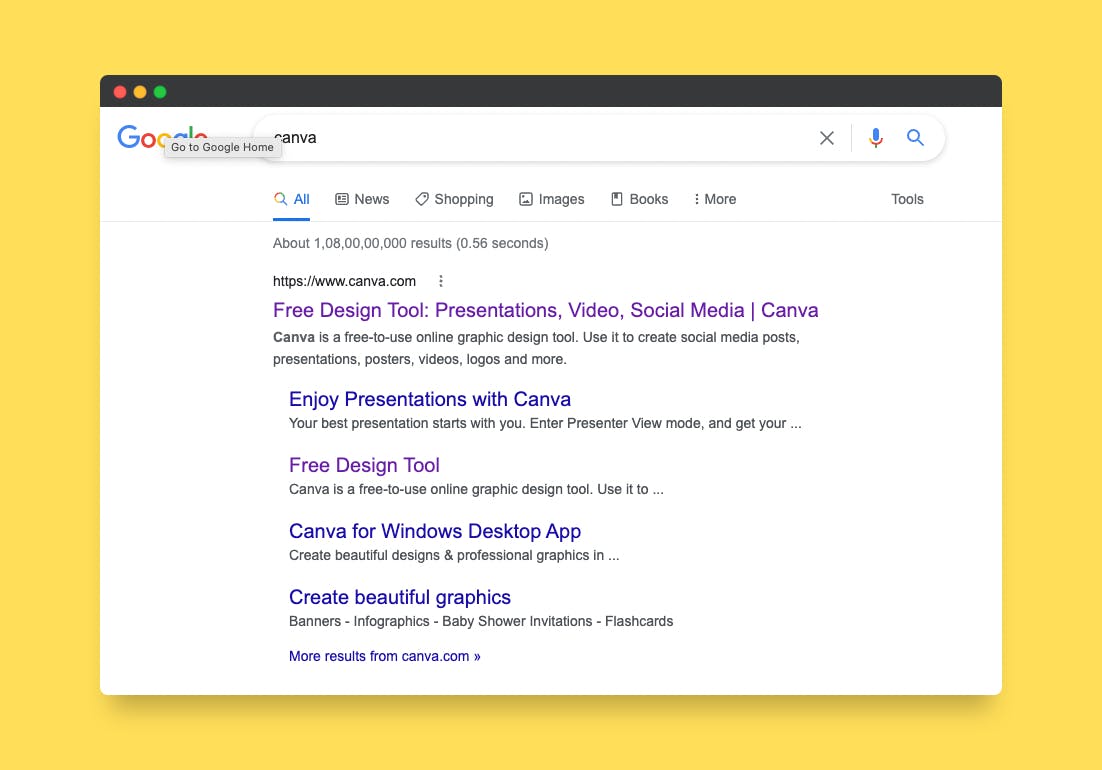
Canva uses keywords that are appealing to a wide audience, such as “Best Design Tool”. We can see the other keywords Canva uses in SEO title, SEO description and Offerings.
I'd like to highlight on the keywords like “Best”, “Free”, “Tool”, “Design”, “Social Media”, “Video”, “templates”, “Graphics”.
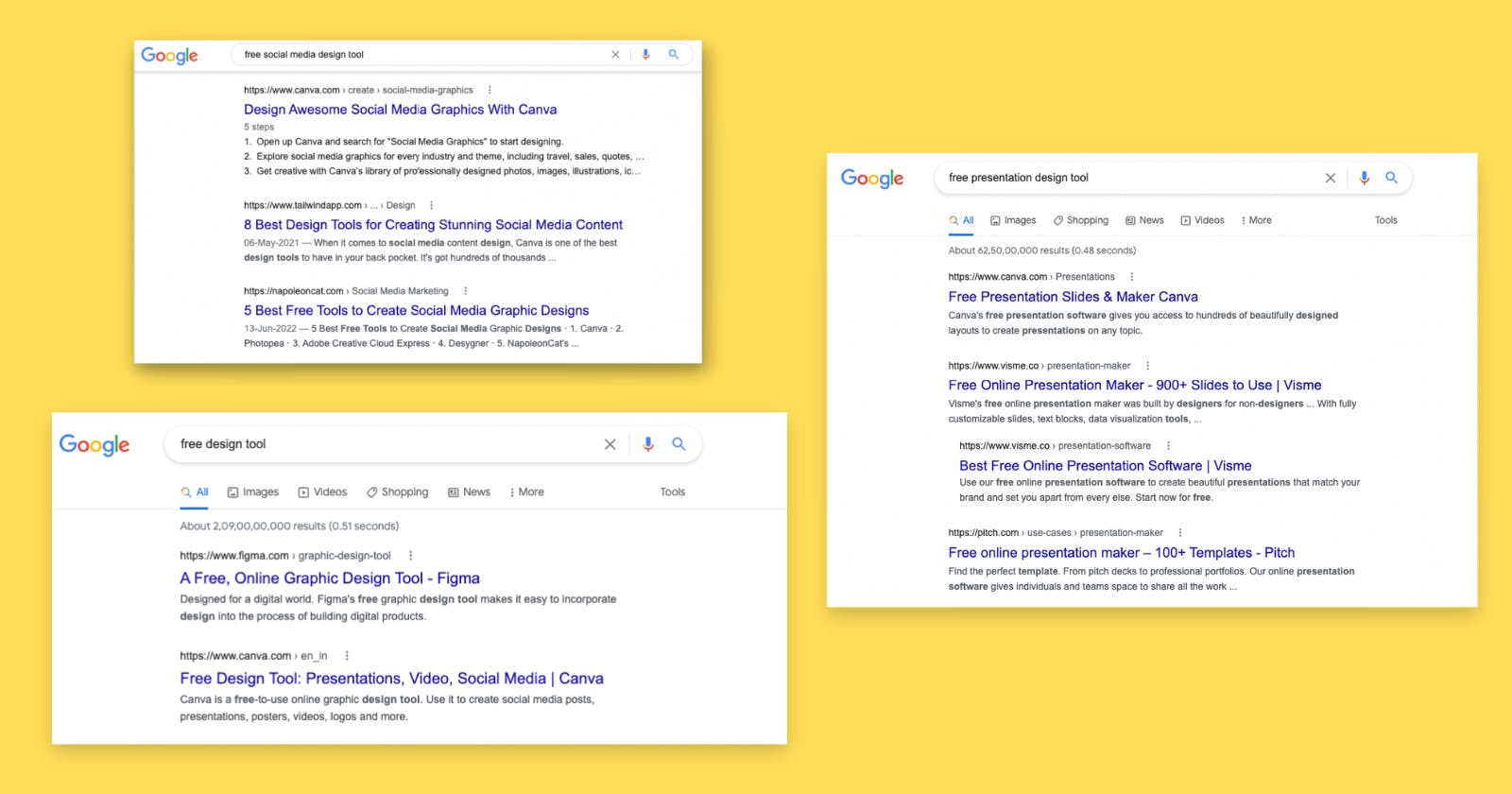
Canva receives a significant portion of its web traffic from social media sources. This means that social media is a great channel for Canva to connect and engage with their audience.
All of this happens without any marketing — it’s about educating users and making them aware of the product, not selling it to them.
It creates an awareness among the users that Canva is a tool for them to use and makes it easier to find when they’re ready.
Interest:
Creating an interest in product is one of the best ways to market it.
In fact, it’s one of the most effective ways to get people interested in what a product have to offer.
If someone can see that there’s a need for their product and they can solve that problem, then they will be more likely to buy it.
Canva is a great example of this.
They recognized that there were many designers who needed to create high-quality images for their work, but didn’t want to pay expensive software or hire someone else to do it for them.
Canva offers an easy solution to this problem by providing all of the tools necessary to make professional-looking images without any design experience.
Canva has a great landing page that has high conversion rates. They have a clear problem statement and explain how the product solves that problem, as well as the features and benefits of using it.
Desire:
The desire is what motivates your potential customers to buy. It’s the reason why people want, need or wish for something in their lives and it can be a strong force that drives them to take action.
Canva creates desires among prospects by offering these features and these are only the top ones:
- Use the platform anywhere even on on the go with Mobile Application
- Easy to get started with tons of templates and inspirations
- Very generous free plan without credit card
- No user is forced to upgrade to pro
- Tons of resources online to get started
- Serving anyone who wants to create designs for free
- The majority of the resources have a commercial license.
- Tier based Pricing model with clear costs and benefits to the user
Action:
The Canva interface places their product front and center. They’ve made it extremely easy for users to get started by making the first step as simple as clicking a button.
This is a great way to get people engaged with your product and gives them a sense of accomplishment.
It’s also important to note that Canva doesn’t bombard users with too many options at once. As they get more comfortable using Canva, they can start exploring the other features available.
Plus, they can always tap into their Design University or Design tips on social media.
Retention
Now that the users have experienced how Canva makes design creation simple, they are eager to start.
As Canva users explore the program and become familiar with its functions, they will want to use it more often.
People love having Canva and want to spread their enjoyment of the product. They become fans, find it valuable — and buy more features or subscriptions.
The most underrated marketing strategy ever
The Canva team deserves praise for their excellent product!
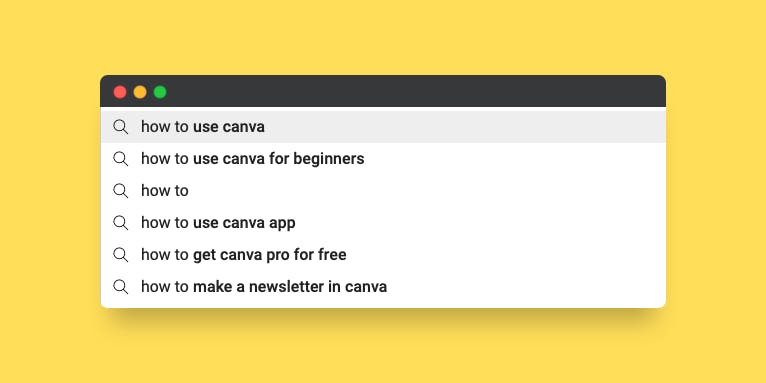
Youtube, Pinterest and other social media sites are powerful search engines in their own right.
Some businesses worry about how to make sure that their advertisements reach as many potential customers as possible. And there is nothing worry with that!
But it’s not Canva that is crushing this space; it’s their loyal customers and content creators who are doing so, by spreading the word about how great Canva is.
How many times have you come across a blog post or video that says something like, “How to create beautiful Instagram posts for free on Canva?” or “How to make flyers for free on Canva?”
Here is an example of the type of content that’s being shared on social media today:
How to create ___ for free on Canva?
Insert your design-related keyword here, and you’ll find tons of resources.
Freelance platforms like Fiverr and Upwork are fueling demand for Canva among clients, who increasingly seek out freelancers with expertise in the tool.
They recognized that creating and scheduling posts on social media was becoming a growing industry.
Canva created a content planner and scheduler for almost all social media platforms in response to an increasing demand for such services.
Canva’s growth was swift and exponential as more users were attracted to the platform. The rise of the creator economy has only added fuel to this fire.
The Landing page that turns visitors into customers
Canva follows a clear pattern when it comes to putting its product in focus.
It can be seen clearly on the landing page’s hero section.

Canva is recognized for its web, desktop, and Mobile applications — all of which allow users to create designs from anywhere.
It also highlights the real-time collaboration for businesses and teams, which is essential for not only Design but Marketing as well.
Microcopy that gets the job done:
Canva follows a solution centric approach with their microcopy.
It is very important to highlight solution centric approach.
The example above from Canva, a design tool for everyone, shows how businesses and users can take their branding to the next level by using its platform.
This is followed by a call to action that clearly states the offer: get started for free without any hassle.
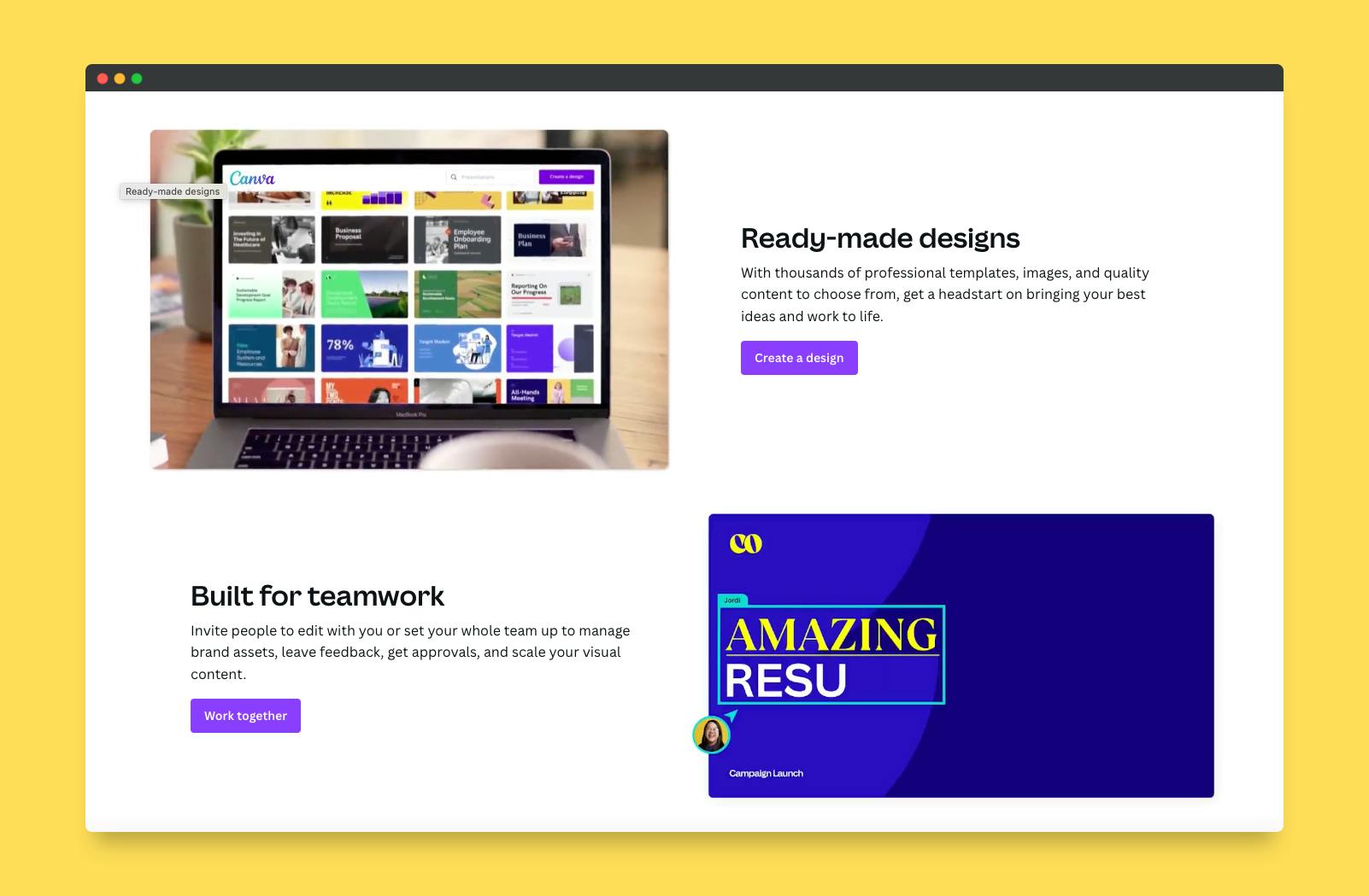
The feature section also follows the solution oriented approach to features without even stating the pain point. Personally, I think its powerful!
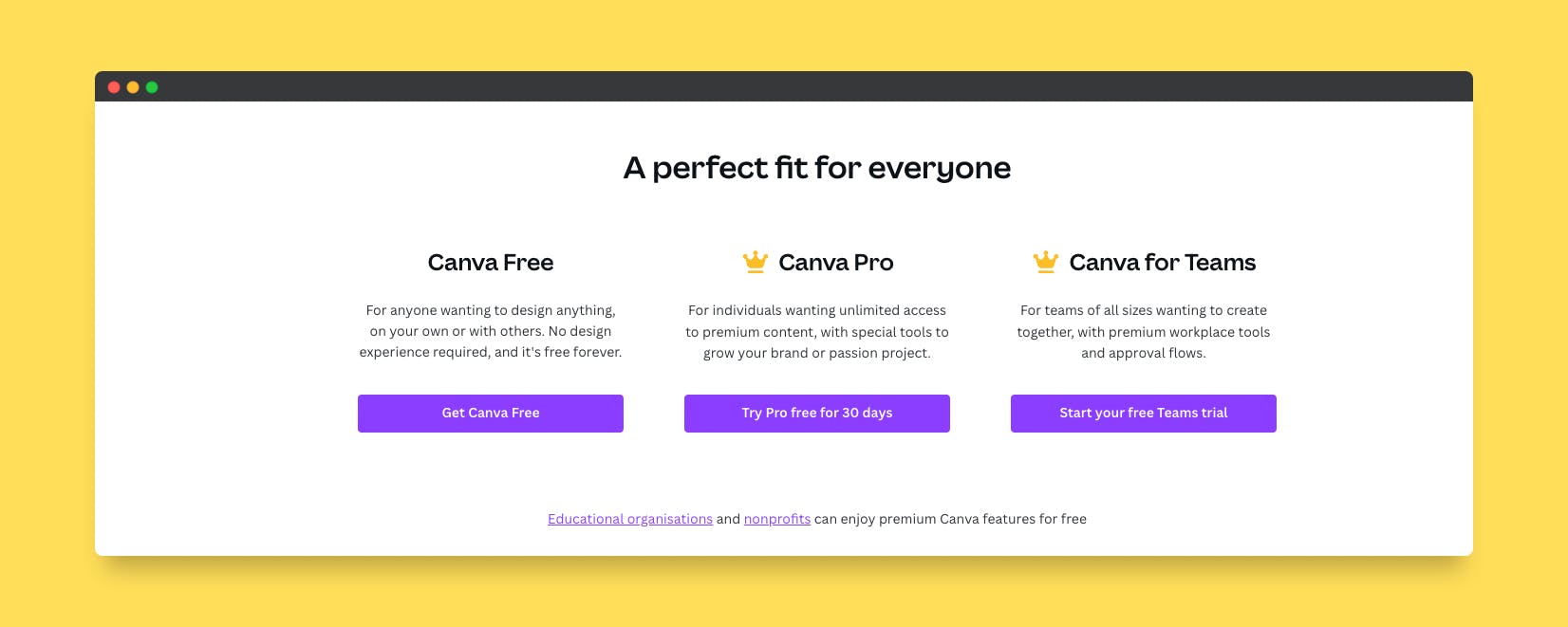
Canva, which believes in the power of education and nonprofits to change lives, makes its design program free for these groups.
Education is the key to remove any frictions:
It is important to educate users about the value of your product. This will help them understand how it can solve their problems and increase their engagement with the product.
It’s much easier to get users onboard when they know what they are getting into from the beginning.
Canva’s navigation menu have five ways to turn prospects into customers:
- Educating users on their offerings and features
- Educating businesses about how Canva can assist them in a variety of industries
- Educating how Canva can help businesses understand the different departments that need content.
- Educating how Canva help teachers, schools and students to create and share their work with the world.
- Explaining how it integrates seamlessly with Learning Managment Systems (LMS) Canva whole section dedicated to their Design School, Blogs, events and Help Centres.
Takeaway
Canva’s success comes from the fact that they keep their product at the forefront of all they do. Product has all the ingredients of going viral right from the start.
Give, Give, Give until they give you back
They tried to do community building without focusing on users.
Most startups change focus and direction as they grow.
But Founders at Canva, who still work at the company, never let go of their vision for what they wanted to build. They constantly improve upon it based on user needs.
We can take away 5 key ingredients for achieving hyper growth without any marketing:
- Great Product that serves everyone with easy-to-use interface with ready made templates for anything
- Designing for everyone is at the heart of a successful content marketing strategy.
- Solution focused approach to ad copies
- Educating their customers so they can achieve more.
- Strong social media presence created by loyal customers.
Additional Resources
At the end of most articles, I include links and other resources that can help people learn more about the topic.
Canva' very own Palette Generator
